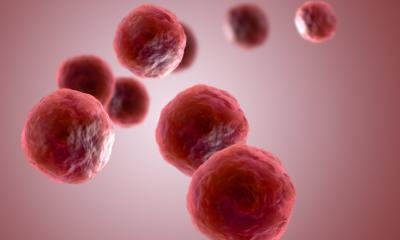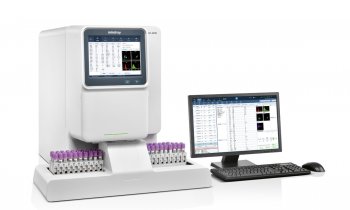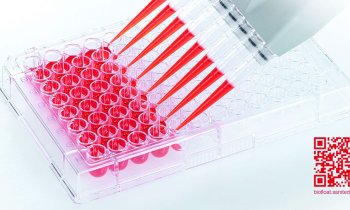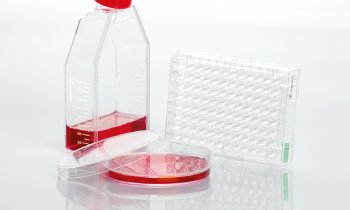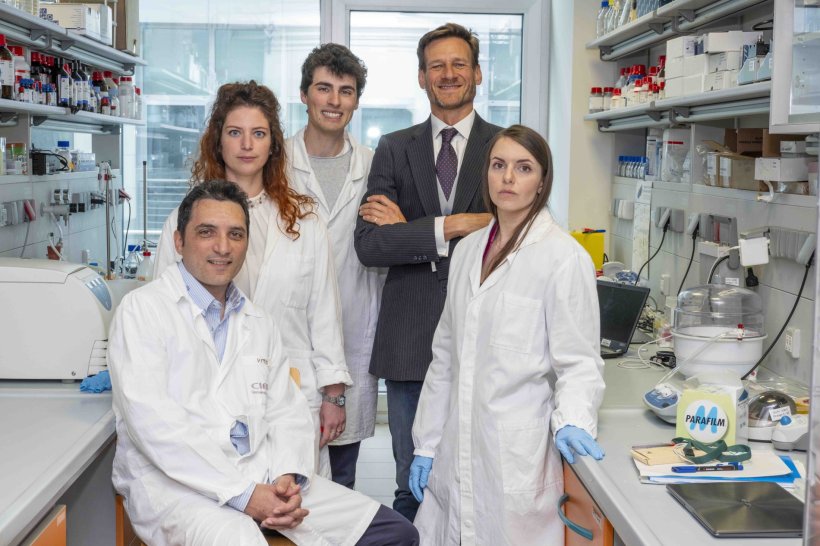
© UniTrento; photo: Federico Nardelli
News • 6.5 million European funding
Fighting cancer with artificial cells and tissue
Martin Hanczyc of the Cibio Department has recently been awarded 6.5 million euros in European funding to conduct two studies on cancer.
The goal of the research groups he coordinates is to create synthetic micro-organisms capable of detecting the presence of the disease and delivering anti-cancer therapies. Fighting cancer with artificial cells that are capable of detecting and treating it. This is the dual objective of a research team of the Department of Cellular, Computational and Integrative Biology - Cibio of the University of Trento, which has recently started two European projects funded by the Horizon Europe - EIC Pathfinder Open program. Both studies are coordinated by Martin Hanczyc, professor of Biochemistry and head of the Artificial biology laboratory at Cibio, and include other European academic institutions and industrial partners.
Professor Hanczyc's laboratory has been working for some time on the development of new artificial cellular technologies and bio-inspired materials. This expertise will be key in carrying out the two new projects.
The two studies have a similar goal: to equip the artificial cells with certain elements that will precisely target the sick cells in the human body. The European funding amounts to 6.5 million euros. At the moment, the research group is made up of Silvia Holler (postdoc researcher), Luca Tiberi (head of the Laboratory of Brain disorders and cancer), and Vito D’Agostino (head of the Laboratory of Biotechnology and nanomedicine), but they will be joined by more scientists in the upcoming months.
The purpose of Bio-HhOST - Bio-hybrid Hierarchical organoid-synthetic tissue, is to create bio-hybrid tissues where artificial cells interact with living carcinogenic cells. By doing so, the artificial cells influence the development of cancer cells and their function, proliferation and differentiation. The artificial cells will interact with organoids, three-dimensional aggregates of cells normally used in research to replicate human tissues and organs as miniaturized and simplified models, which are created from stem cells. These artificial cells contain specific elements, such as growth factors or anticancer drugs that are capable of responding to chemical stimuli in the environment and targeting only living cancer cells. Their goal is to stop their growth and defeat cancer. These new, chemically programmable materials will make it possible to reduce the use of animals in scientific studies and to support the development and study of drugs on systems that are more similar to human beings.
The research work will be carried out by an interdisciplinary team with skills in biology, bioengineering, microfluidics, mathematics, and computer programming. The University of Cardiff, the Zurich University of Applied Sciences, and MIC, a Paris-based company, participate in the project together with the University of Trento.
The second project that Martin Hanczyc will coordinate is OMICSENS. Researchers will build the first nano-photonic integrated biomolecular sensor, which will revolutionize the diagnosis and prognosis of lung cancer. The research will focus specifically on non-small cell lung cancer, a particularly aggressive type of lung cancer that is difficult to detect and treat. The sensor will be equipped with a microchip containing a few drops of blood, a sample of tissue or some extracellular vesicles of a patient. This material interacts with artificial particles that bind with cancer cells, if any. At this point a detector, made of synthetic metamaterials, analyses the chemical reactions in the sample using artificial intelligence algorithms.
Thanks to the biosensor, a doctor will be able to quickly check if there is a tumor and immediately start treatment. The chip will be designed to be user ready and also reusable. The researchers aim to make it available for use in patients with other types of tumors as well. The partners in this project are the Institute for Bioengineering of Catalonia, Ludwig Maximilian University of Munich, the Royal Institute of Technology of Stockholm and several European companies (Multiwave Imaging, 4K-MEMS SA and Quaisr). The academic and industrial partners of this project have expertise in oncology, bioengineering, microfluidics, biochemistry, microelectromechanical systems, nano-photonics, computational physics and artificial intelligence.
Source: Università di Trento
07.05.2024





